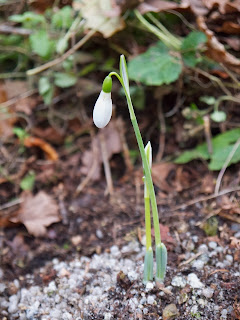This cautionary phrase, beloved of lawsuit-fearing corporations and public bodies, could apply to the whole garden and everything in it at the moment. This afternoon it's grey and overcast (again), with a fine drizzle in the wind but a ludicrously balmy temperature of 16C as mild, humid air is dragged in from the Atlantic, enveloping this part of Devon in a warm, wet, claggy blanket.
This iridescent dumbledor is unusual so late in the year. Appropriately enough for a dung beetle, it's walking across the cover to our septic tank. If it only knew what riches lay beneath its feet!
 |
| A dumbledor Geotrupes sp. sitting on top of its wildest dream |
At the weekend we juiced some more apples (thanks Matt for the extra supplies!), sheltering in the kitchen to avoid the latest pulse of heavy rain – ahead of which I grabbed a few photos of seasonal contrasts in the garden (see below).
On Monday (4th), some much-needed but all-too-fleeting sunshine revealed a Red Admiral butterfly and a male Common Darter dragonfly still out and about, but otherwise it is a mushy, slushy story of autumnal decay. The higher-than-normal temperatures – particularly the complete absence of night-time frosts – mean that several horticultural refugees from summer, among them
Rudbeckia and
Verbena bonariensis, linger on, crossing over with "winter" flowers such as a
Mahonia and
Jasminum nudiflorum that are already doing their thing... It's all so confusing. I need a nice soothing cup of tea.
Summer...
 |
| Penstemon 'Raven' |
 |
| Rudbeckia fulgida var deamii |
 |
| Verbena bonariensis |
...meets winter – on the same day!
 |
| Mahonia x media 'Winter Sun' or is it 'Lionel Fortescue'? |
 |
| The tomato-like hips of Rosa rugosa |
 |
| Winter jasmine Jasminum nudiflorum |
|
|
|
|
|
|
 |
| Has bean... |



















